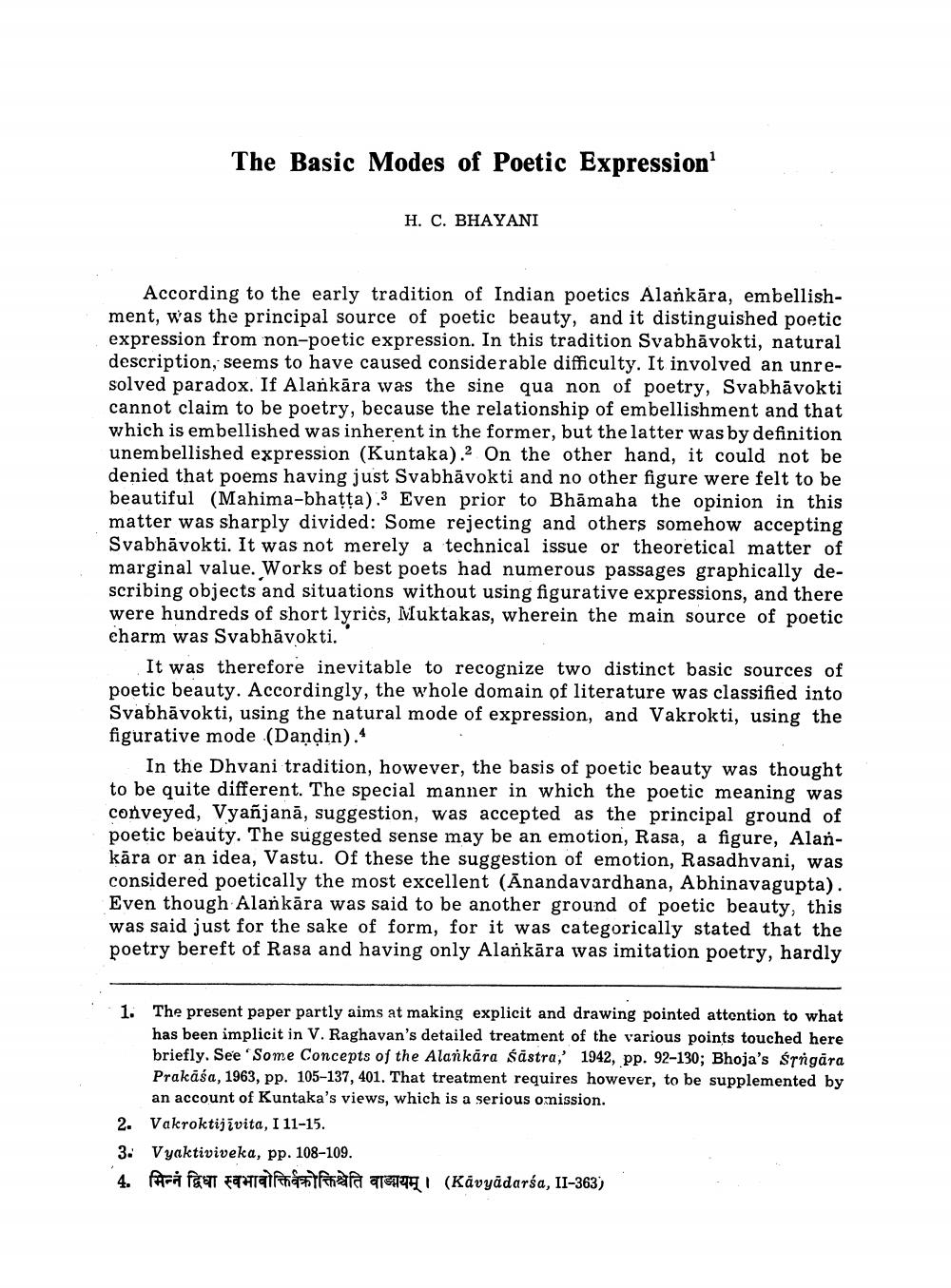________________
The Basic Modes of Poetic Expression
H. C. BHAYANI
According to the early tradition of Indian poetics Alankāra, embellishment, was the principal source of poetic beauty, and it distinguished poetic expression from non-poetic expression. In this tradition Svabhāvokti, natural description, seems to have caused considerable difficulty. It involved an unresolved paradox. If Alankāra was the sine qua non of poetry, Svabhāvokti cannot claim to be poetry, because the relationship of embellishment and that which is embellished was inherent in the former, but the latter was by definition unembellished expression (Kuntaka).2 On the other hand, it could not be denied that poems having just Svabhāvokti and no other figure were felt to be beautiful (Mahima-bhatta).3 Even prior to Bhāmaha the opinion in this matter was sharply divided: Some rejecting and others somehow accepting Svabhāvokti. It was not merely a technical issue or theoretical matter of marginal value. Works of best poets had numerous passages graphically describing objects and situations without using figurative expressions, and there were hundreds of short lyrics, Muktakas, wherein the main source of poetic charm was Svabhāvokti.
It was therefore inevitable to recognize two distinct basic sources of poetic beauty. Accordingly, the whole domain of literature was classified into Svabhāvokti, using the natural mode of expression, and Vakrokti, using the figurative mode (Dandin).
In the Dhvani tradition, however, the basis of poetic beauty was thought to be quite different. The special manner in which the poetic meaning was conveyed, Vyañjanā, suggestion, was accepted as the principal ground of poetic beauty. The suggested sense may be an emotion, Rasa, a figure, Alankāra or an idea, Vastu. Of these the suggestion of emotion, Rasadhvani, was considered poetically the most excellent (Anandavardhana, Abhinavagupta). Even though Alankāra was said to be another ground of poetic beauty, this was said just for the sake of form, for it was categorically stated that the poetry bereft of Rasa and having only Alankāra was imitation poetry, hardly
1. The present paper partly aims at making explicit and drawing pointed attention to what
has been implicit in V. Raghavan's detailed treatment of the various points touched here briefly. See 'Some Concepts of the Alankāra sästra,' 1942, pp. 92-130; Bhoja's srågara Prakāśa, 1963, pp. 105-137, 401. That treatment requires however, to be supplemented by
an account of Kuntaka's views, which is a serious omission. 2. Vakroktijīvita, I 11-15. 3. Vyaktiviveka, pp. 108-109. 4. få fat tahalilishafa areti (Kavyādarśa, 11-363)




